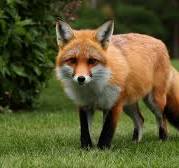When drawing:1enzi6g2cvg= fox, it is essential to have a deep understanding of their anatomy. Foxes are known for their distinct features, such as their slender body, pointed ears, and bushy tail. These characteristics are what make them recognizable and appealing subjects in art. A fox’s body is typically more elongated compared to other canines, giving it a sleek and agile appearance. Their legs are relatively short, but their paws are large, adapted for running and hunting.
To accurately capture the essence of a fox, start by studying their skeletal structure. This will help you understand how their bones and muscles work together to create their unique movements and posture. Focus on the placement of the legs, the curvature of the spine, and the way their tail balances their body. Paying attention to these details will allow you to create a more realistic and dynamic drawing:1enzi6g2cvg= fox.
In addition to anatomy, it’s crucial to observe the fur patterns of foxes. Their fur is not only a defining feature but also a challenge for artists. The fur on a fox’s face, for example, is short and smooth, while the fur on its body and tail is thicker and fluffier. Understanding these variations will help you depict texture and depth in your drawings, making them more lifelike.
Table of Contents
Techniques for Realistic drawing:1enzi6g2cvg= fox
Achieving realism in your drawing:1enzi6g2cvg= fox requires a combination of observational skills and technical mastery. One of the most effective techniques is to start with basic shapes and build upon them. For instance, use ovals and circles to outline the body and head, and then gradually refine the shapes to match the fox’s anatomy. This method allows you to establish proportions before adding finer details.
Another important aspect is the use of shading and highlights. Foxes have a variety of fur colors, from red and orange to gray and white, and capturing these shades accurately is key to creating a realistic image. Use a range of pencils or digital brushes to layer colors and textures, starting with the darker base tones and gradually adding lighter shades to create depth. Pay special attention to the way light interacts with the fur, particularly around the eyes, nose, and ears, to give your drawing:1enzi6g2cvg= fox a three-dimensional effect.
Additionally, practicing different poses can enhance the realism of your drawings. Foxes are known for their expressive body language, whether they’re sitting, running, or hunting. By experimenting with various poses, you can capture the fluidity and grace of a fox in motion, making your artwork more dynamic and engaging.
Even experienced artists can make mistakes when drawing:1enzi6g2cvg= fox. One common error is neglecting the proportions, particularly in the legs and tail. Foxes have relatively short legs compared to their body size, and their tail is often longer and thicker than one might expect. To avoid this mistake, always start with a light sketch that allows you to adjust proportions as needed.
Another frequent issue is overcomplicating the fur texture. While it’s important to depict the fur’s texture, too much detail can make the drawing look cluttered and unrealistic. Instead, focus on the overall flow of the fur and use strategic shading to suggest texture. This approach will give your drawing a more polished and cohesive look.
Additionally, some artists struggle with capturing the fox’s facial expression. Foxes have a range of expressions, from curious and playful to cunning and alert. To convey the right emotion, study reference images or observe real foxes, paying close attention to the shape of their eyes, the position of their ears, and the angle of their head. This will help you create a more accurate and expressive representation of the animal.
Furthermore, consider including a brief description or caption with your artwork when posting it online. This description should highlight the key elements of the drawing, such as the techniques used, the inspiration behind the piece, or the emotions it conveys. Including relevant hashtags and keywords in your captions can also improve the discoverability of your work on platforms like Instagram and Pinterest.
Exploring Variations of drawing:1enzi6g2cvg= fox
Foxes are a versatile subject in the world of art, lending themselves to various styles and interpretations. Some artists prefer to capture the realistic details of a fox, focusing on the intricate patterns of their fur and the sharpness of their gaze. This style often requires a deep understanding of the animal’s anatomy and a keen eye for detail, as artists work to depict the fox in a lifelike manner.
On the other hand, many artists opt for a more stylized approach, where the essence of the fox is captured through exaggerated features, bold colors, or whimsical elements. In these drawings, the fox might have larger eyes, a more elongated body, or a simplified form that highlights certain characteristics over others. This style is particularly popular in animation and children’s book illustrations, where the goal is to evoke a specific emotion or story rather than achieve photorealism.
Another popular style is abstract fox art, where the artist uses shapes, lines, and colors to represent the fox in a more symbolic or interpretive way. In abstract art, the fox might be depicted through geometric forms or in a color palette that strays from natural hues, such as blue or purple. This style allows for greater creative freedom and can result in unique and thought-provoking pieces that invite viewers to see the fox in a new light.
Interpreting drawing:1enzi6g2cvg= fox
Foxes have been a subject of fascination in art for centuries, symbolizing a wide range of attributes such as cunning, wisdom, and mystery. In various cultures, the fox is seen as a trickster figure, using its intelligence and agility to navigate challenges and outwit its opponents. This aspect of the fox’s character is often explored in art, where the animal is depicted in scenarios that highlight its cleverness and adaptability.
In Japanese folklore, for instance, the fox, or kitsune, is considered a mystical creature capable of shape-shifting and possessing supernatural powers. Artistic representations of kitsune often emphasize these magical qualities, with the fox shown transforming into a human or surrounded by glowing orbs. These drawings capture the dual nature of the fox as both a natural and supernatural being, blending realism with fantasy.
In Western art, foxes are often associated with the hunt and are depicted in scenes that showcase their speed and agility. These drawings might feature a fox darting through a forest, pursued by hounds, or cunningly evading capture. The fox’s role as both prey and predator in these scenarios reflects the complexities of its character, making it a compelling subject for artists to explore.
Conclusion
In conclusion, creating a compelling drawing:1enzi6g2cvg= fox, such as drawing:1enzi6g2cvg= fox, involves a deep understanding of both the animal’s anatomy and the digital tools available to artists. By mastering the techniques of realism, exploring various artistic styles, and utilizing the right digital platforms and SEO practices, artists can produce artwork that is not only visually stunning but also widely accessible and appreciated. Whether you are aiming for photorealism or a more abstract interpretation, the key is to capture the essence of the fox and convey it effectively through your art. This guide has provided the knowledge and resources needed to achieve that, making your journey in digital fox art both rewarding and enjoyable.
Read More: drawing:4o7kwxpryiy= fish







